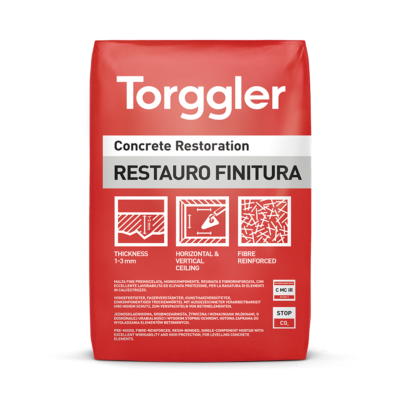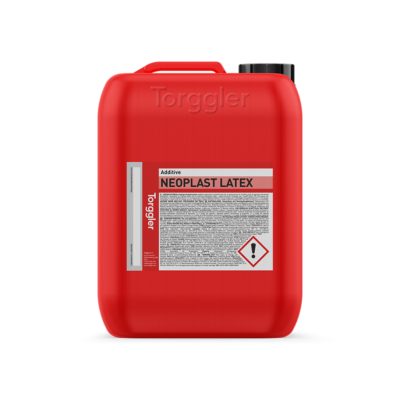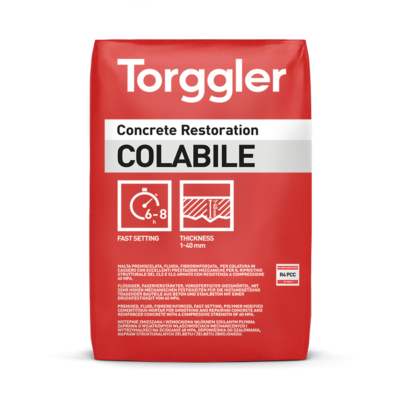Tile Grout ≤8 mm
Cement-based powder grout, classified as CG2 WA in compliance with EN 13888, for rigid filling of joints up to 8 mm.
Cement-based powder grout, classified as CG2 WA in compliance with EN 13888, for rigid filling of joints up to 8 mm.
Variations
Application areas
Discover more



Tile Grout ≤8 mm is a grout powder, based on high- strength cements, fine crystalline aggregates, selected pigments, and specific polymers and additives, available in a wide range of colours. After mixing with water, you have a fine grout which is easy to use and which provides smooth, compact and impervious joints with excellent abrasion resistance. It resists freezing/thawing cycles.
Preparation
Allow the adhesive or foundation mortar used for gluing the tiles to harden properly according to the specifications of the technical data sheet. Mortars or adhesives that are not fully hardened may interfere with and alter the colour of Tile Grout ≤8 mm when it is applied. Thoroughly clean the joints to remove dust, flaking material and other dirt. Remove excess adhesive or mortar that has hardened. If the tiles and/or the substrates are highly absorbent or have been applied under very hot or windy conditions, wet the joints and then remove the excess water to avoid the formation of lightercoloured surface rings and stains. Highly porous, absorbent tiles such as cotto or certain types of natural stone should be treated with Promural Silicon before grouting so as to facilitate cleaning after the joints have been filled. If you want to use a dark colour on unglazed tiles or light-coloured natural stone, it is a good idea to make preliminary tests to ensure that no permanent marks will be left.
Mixing the product
Mix Tile Grout ≤8 mm with 26 – 28 % clean water (1.3 – 1.4 litres per 5 kg bag). The amount of water to be used for mixing varies considerably according to colour (see table of technical specifications). Pour almost all the mixing water required in a suitable container. Then add the powder product, slowly, and mix at the same time using a low speed electrical drill with mixer attachment. Once you have added all the powder product, pour in the rest of the water and mix until the product is smooth, creamy and free of lumps and has the required consistency. The right consistency varies according to the width of the joints to be grouted and on whether the product is to be applied to a wall or floor. Do not exceed the recommended quantity of water. Excessively fluid mixtures may leave surface rings and stains and are subject to excessive shrinkage upon drying, leading to reduced thickness, cracking and poor mechanical performance. Remove all non-mixed lumps of material from the walls and the bottom of the container. Allow the mixture to stand for 2 or 3 minutes, then mix again briefly. The mix prepared has a pot life of about 2 hours under normal conditions (at +20°C). Higher temperatures reduce the pot life, lower temperatures increase it. If you need to prepare two or more mixes for use on the same site, use the same quantity of water for each mix so that grouting will have a uniform colour.
Application
Fill the joints well using a rubber paddle and making sure not to leave voids or air pockets. Then scrape off the excess grout.
Cleaning
Wait for the grout to start setting (ca. 30 mintues), then clean the tiles and finish the surface of the joints with a soft, moist sponge that must be rinsed frequently in clean water. Do not clean the tiles before the grout has started to set otherwise part of the grout, still fresh, will be removed from the joints. To obtain a uniform colour on the entire surface, make sure the sponge is moistened to approximately the same extent all the time. A wetter sponge will leave lighter-coloured marks or stains or parts with a different colour shade. When the grout is dry, clean the tiles with a clean, soft, dry cloth. Grouted floors can be walked on after about 24 hours. The toolsused for applying the grout may be cleaned with water before the grout hardens. Once hardened, you may only clean them using mechanical instruments.
FInishing
Stains or traces of grout, especially on tiles with a rough, absorbent surface, can be removed with Piastrellite Cleaner (acid detergent for tiles) at least 10 days after grouting. Do not use cleaners of this type on floors and walls that are sensitive to acids (e.g. marble).
Tile grout ≤8 mm must be stored in a dry and protected place. Unopened in its original bags, the product can be stored for at least 24 months. KEEP AWAY FROM MOISTURE.
Do not use Tile Grout ≤8 mm in areas that require chemical resistance to acids and perfect impermeability: for example, dairies, butcheries, chemical factories, tanneries, and paper mills. Do not apply the product at temperatures below +5°C or above +35°C. Do not mix with dirty or murky water. Do not mix the product with other binders such as cement, hydraulic lime, gypsum, etc. the mix cannot be diluted with water once it has started setting. Do not use the mixed product when it has already started to set. therefore, always prepare quantities of mix which can be used within the pot life. Expansion joints should be sealed with a silicone sealant in the Torggler Sitol Silicon range.
| Color | Code | Packaging | Packaging size | Pallet | Barcode |
|---|---|---|---|---|---|
| White 9010 | 5362 | bag | 4x5kg |
40 cardboards
|
|
| Jasmin 1013 | 5363 | bag | 4x5kg |
40 cardboards
|
|
| Manhattan 7035 | 5364 | bag | 4x5kg |
40 cardboards
|
|
| Pearl grey 7040 | 5365 | bag | 4x5kg |
40 cardboards
|
|
| Cement grey 7032 | 5366 | bag | 4x5kg |
40 cardboards
|
|
| Grey 7030 | 5367 | bag | 4x5kg |
40 cardboards
|
|
| Dark grey | 8433 | bag | 4x5kg |
40 cardboards
|
|
| Anthracite 7022 | 5368 | bag | 4x5kg |
40 cardboards
|
|
| Black 9005 | 5369 | bag | 4x5kg |
40 cardboards
|
|
| Vanilla 1015 | 5370 | bag | 4x5kg |
40 cardboards
|
|
| Bahama 1001 | 5371 | bag | 4x5kg |
40 cardboards
|
|
| Beige | 5372 | bag | 4x5kg |
40 cardboards
|
|
| Hazelnut 1011 | 5373 | bag | 4x5kg |
40 cardboards
|
|
| Brown 1019 | 5374 | bag | 4x5kg |
40 cardboards
|
|
| Chocolate 8003 | 5375 | bag | 4x5kg |
40 cardboards
|
|
| Terracotta 3012 | 5376 | bag | 4x5kg |
40 cardboards
|
|
| Chestnut 8028 | 5377 | bag | 4x5kg |
40 cardboards
|
| MEASURED ON POWDER PRODUCT | |
| Consistency | fine powder |
| Apparent density | 1,30 kg/litre |
| Grain size | 0 – 0,15 mm |
| MEASURED ON FRESH MIX | |
| Mixing water | 26 – 28 % equivalent to 1,2 – 1,3 litri per 5 kg bag |
| Mix density | 1,90 kg/litre |
| Mix consistency | creamy and fluid |
| Mix pot life (at +20°C) | ca. 30 minutes |
| Application temperature | from +5 °C to +35 °C |
| MEASURED ON HARDENED PRODUCT | |
| Bending strength (according to EN 12808-3): after 28 days | 8,0 N/mm2 (≥ 2,5 N/mm2) |
| Bending strength (according to EN 12808-3): after freezing/thawing cycles | 4,0 N/mm2 (≥ 2,5 N/mm2) |
| Compression strength (according to EN 12808-3): after 28 days | 30,0 N/mm2 (≥ 15,0 N/mm2) |
| Compression strength (according to EN 12808-3): after freezing/thawing cycles | 36,0 N/mm2 (≥ 15,0 N/mm2) |
| Abrasion resistance ( EN 12808-2) | 500 mm3 (≥1000 mm3) |
| Capillary absorption (sec. EN 12808-5): after 30 minutes | 0,5 grams (≤ 2,0 g) |
| Capillary absorption (sec. EN 12808-5): after 240 minutes | 0,8 grams (≤ 5,0 g) |
| Water shrinkage (sec. EN 12808-4) | 1,6 mm/m (≤ 3,0 mm/m) |
| Can be walked on | after 24 hours |
| Final hardening | after 7 days |
| Operating temperature | from –30 °C to +90 °C |
| Consumption | from 0,1 to 4,0 kg/m2 |
| Classification to EN 13888 | CG2 WA |
The consumption of Tile Grout ≤8 mm can vary from 0.1 to 5.0 kg/m2. It depends on the size and thickness of the tiles and the width and depth of the joints. As a guideline, a 5 kg bag of Tile Grout ≤8 mm can be used to cover approx. 8 m of ceramic floor or wall tiles with 250x250x10 mm tiles and 5 mm wide joints, while a 5 kg bag can be used to cover approx. 5.5 m2 of floor or wall tiles. The table below shows some indicative consumption values, expressed in kg/m2, for the product Tile Grout ≤8 mm White.
| TILE SIZE | JOINT WIDTH (mm) | ||
| Size (mm) | 2 | 5 | 8 |
| 20 x 20 x 4 | 1,1 | 2,8 | 4,5 |
| 50 x 50 x 4 | 0,5 | 1,3 | 2,1 |
| 100 x 100 x 6 | 0,4 | 0,9 | 1,5 |
| 100 x 100 x 10 | 0,6 | 1,4 | 2,3 |
| 150 x 150 x 10 | 0,4 | 1,0 | 1,6 |
| 120 x 240 x 10 | 0,4 | 1,0 | 1,6 |
| 250 x 250 x 10 | 0,3 | 0,6 | 1,0 |
| 330 x 330 x 10 | 0,2 | 0,5 | 0,8 |
| 400 x 400 x 10 | 0,2 | 0,4 | 0,7 |
| 500 x 500 x 10 | 0,1 | 0,3 | 0,5 |
The values are expressed in kg/m2.
Formula for calculating consumption
(it is recommended to foresee approx. +10% of material)
A = tile length (mm)
B = tile width (mm)
C = tile thickness (mm)
D = joint width (mm)
Contact our team for personalized support and product guidance.